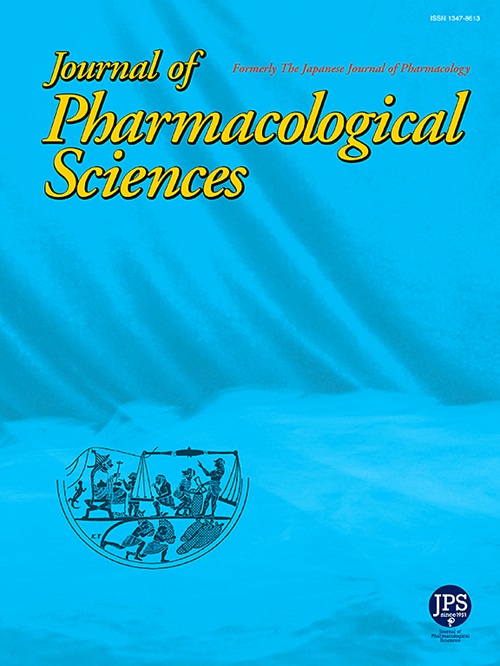Ca2+ microdomains in vascular smooth muscle cells: Roles in vascular tone regulation and hypertension
IF 2.9
3区 医学
Q2 PHARMACOLOGY & PHARMACY
引用次数: 0
Abstract
Vascular smooth muscle cells (VSMCs) modulate blood pressure by adjusting vascular contractility. Specific families of ion channels that are expressed in VSMCs regulate membrane potential and intracellular Ca2+ concentration ([Ca2+]cyt). Subsets of them are known to form molecular complexes with Ca2+-sensitive molecules via scaffolding proteins such as caveolin and junctophilin. This enables localized and molecular complex-specific signal transduction to regulate vascular contractility. This intracellular region is referred to as a Ca2+ microdomain. When hypertensive stimuli are applied to blood vessels, gene expression of ion channels and scaffold proteins in vascular cells changes dramatically, often leading to membrane depolarization and increased [Ca2+]cyt. As a result, blood vessels undergo functional remodeling characterized by enhanced contractility. In addition, the transcription of inflammatory genes in vascular cells is also upregulated. This induces leukocyte infiltration into the vascular wall and structural remodeling mediated by VSMC proliferation and extracellular matrix remodeling. This functional and structural remodeling perpetuates the hypertensive state, leading to progressive damage to systemic organs. This review summarizes recent findings on the mechanisms by which Ca2+ microdomains in VSMCs regulate contractility. In addition, the changes in Ca2+ microdomains due to hypertensive stimuli and their contributions to both functional and structural remodeling are summarized.
血管平滑肌细胞中的Ca2+微结构域:在血管张力调节和高血压中的作用
血管平滑肌细胞(VSMCs)通过调节血管收缩来调节血压。VSMCs中表达的特定离子通道家族调节膜电位和细胞内Ca2+浓度([Ca2+]cyt)。已知它们的子集通过支架蛋白(如caveolin和junctophilin)与Ca2+敏感分子形成分子复合物。这使得局部和分子复合物特异性信号转导能够调节血管收缩性。这个细胞内区域被称为Ca2+微域。当高血压刺激作用于血管时,血管细胞中离子通道和支架蛋白的基因表达发生显著变化,往往导致膜去极化和[Ca2+]cyt增加。结果,血管经历以收缩性增强为特征的功能性重塑。此外,血管细胞中炎症基因的转录也上调。这诱导白细胞浸润到血管壁,并通过VSMC增殖和细胞外基质重塑介导结构重塑。这种功能和结构的重塑使高血压状态永久化,导致对全身器官的进行性损害。本文综述了VSMCs中Ca2+微域调控收缩性的机制。此外,本文还总结了高血压刺激引起的Ca2+微域的变化及其对功能和结构重塑的贡献。
本文章由计算机程序翻译,如有差异,请以英文原文为准。
求助全文
约1分钟内获得全文
求助全文
来源期刊
CiteScore
6.20
自引率
2.90%
发文量
104
审稿时长
31 days
期刊介绍:
Journal of Pharmacological Sciences (JPS) is an international open access journal intended for the advancement of pharmacological sciences in the world. The Journal welcomes submissions in all fields of experimental and clinical pharmacology, including neuroscience, and biochemical, cellular, and molecular pharmacology for publication as Reviews, Full Papers or Short Communications. Short Communications are short research article intended to provide novel and exciting pharmacological findings. Manuscripts concerning descriptive case reports, pharmacokinetic and pharmacodynamic studies without pharmacological mechanism and dose-response determinations are not acceptable and will be rejected without peer review. The ethnopharmacological studies are also out of the scope of this journal. Furthermore, JPS does not publish work on the actions of biological extracts unknown chemical composition.

 求助内容:
求助内容: 应助结果提醒方式:
应助结果提醒方式:


